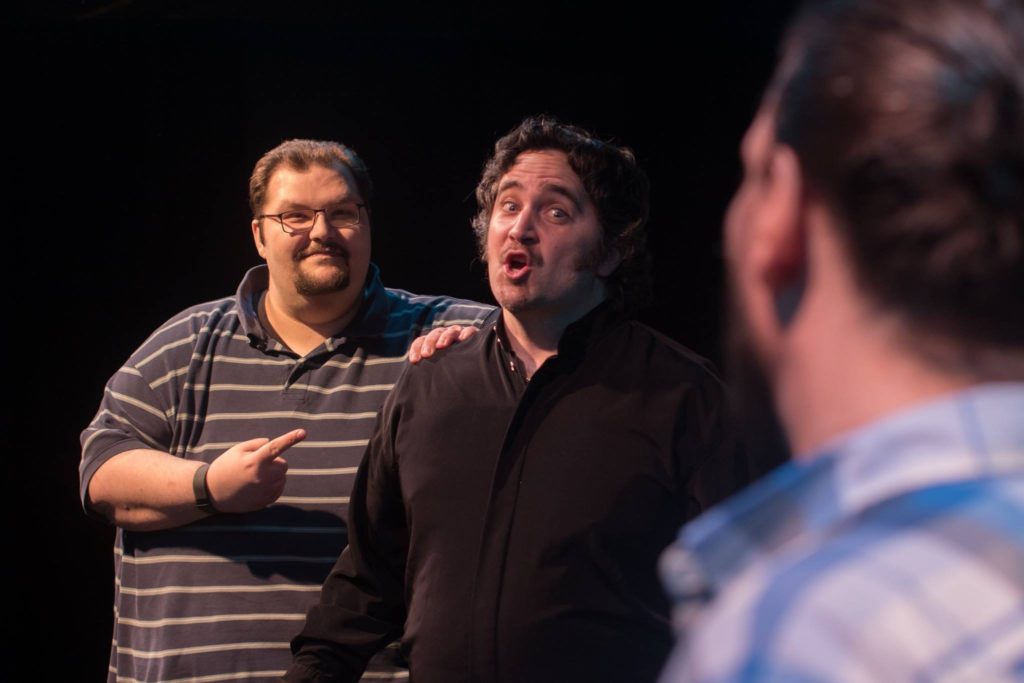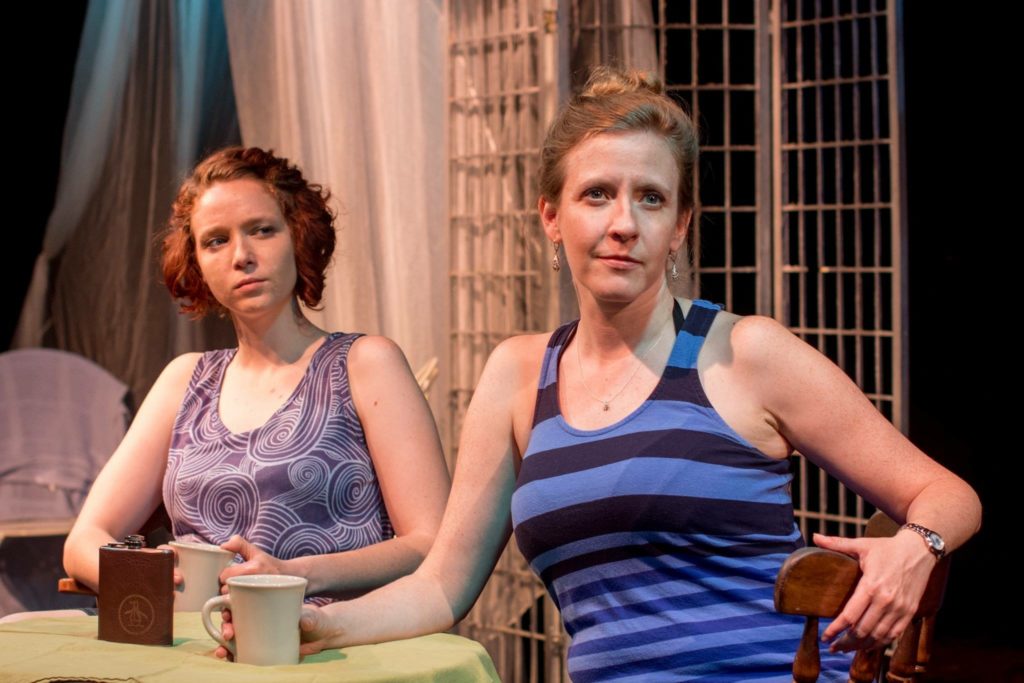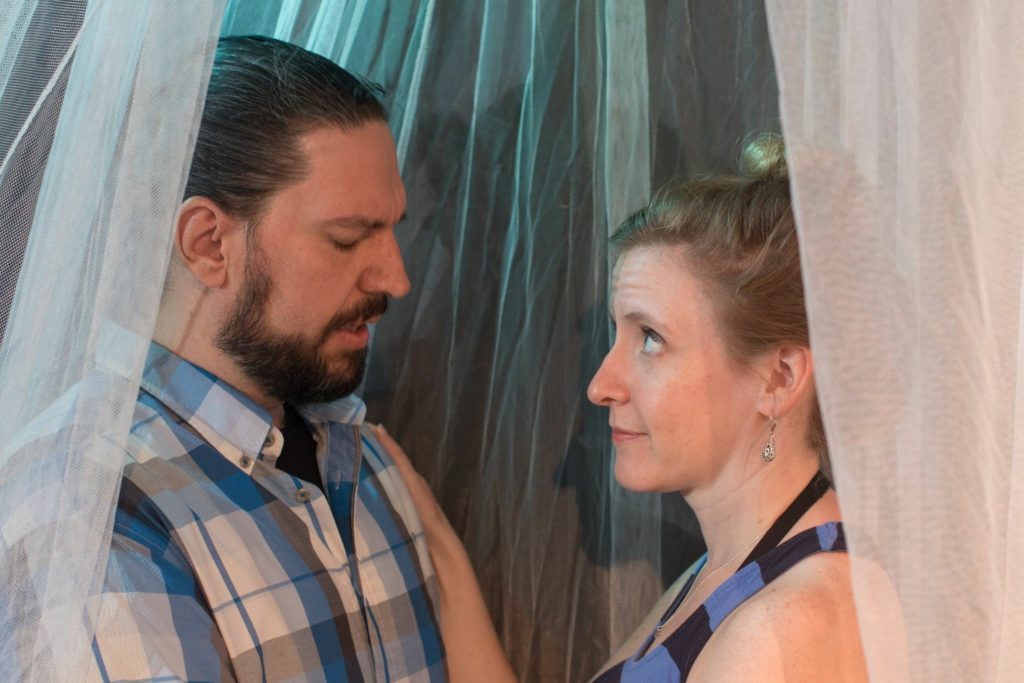
Laugh, cry and sigh with us! My next show runs this month – the return of Seattle Experimental Theater’s “The Journal”, July 14 – 23 at the Ballard Underground in Seattle. Advance tickets available for $18 at Brown Paper Tickets ($20 at the door).
This week brings the (re)opening of a special show: The Journal; a fully improvised play inspired by the works of Nicholas Sparks (“The Notebook”, “Message in a Bottle”, etc.)
What The Journal gives us as a cast is the dramatic framework to tell nuanced stories; where characters can have significant connections and experience real emotions – good and bad. It’s truly a different kind of storytelling as compared to most of the shows I’m in. Our biggest challenge is how to communicate this difference to audiences who think improvisors can only offer one note: comedy.
And it’s ironic that all this nuance is inspired by the fairly coarsely-grained romantic stories told by Nicholas Sparks, who routinely creates ridiculous and melodramatic romantic circumstances for his characters.
I often tell my improv students about my experience in the debut of The Journal in 2012. As improvisors, we are often primed to optimize our work for laughter, subconsciously judging our success by the audible feedback contained in a round of laughs from an audience.
A few performances into that first run of The Journal, I was playing the dying mother of the female romantic lead. I had one of those meta-aware moments where I realized we hadn’t ‘heard’ from the audience for a while, and momentarily worried. Are they bored? Disconnected? It was then that I heard the first of the sniffles. Then another. Oh my God, they were crying! We had obtained that moment of transcendence so elusive to improvisors – creating characters sympathetic and believable enough that we empathize with them during moments of trauma, rather than laughing disconnectedly.
4 years later, I’m no longer playing the female swing (responsible for a full spectrum of daughter/mother/crone roles in one show); I’m now the female romantic lead around which the rest of the story swirls.
Beginning improvisors are taught the importance of “CROW” – character, relationship, objective and where – when telling a story. The Journal limits our ‘where’ to locations in a small beachfront town called Swan Beach. We also draw heavily from the existing Nick Sparks films to give us character archetypes – in this case, the pair of “second chance” mid-life lovers, of whom one or both is emerging from a previous relationship (divorcee, widower, troubled or estranged.) Using this framework as a metaphor, we spend most of our time defining and exploding the Objective and the Relationships. But the story structure ITSELF is actually fairly undefined.
And unlike many long form improv shows, the audience gets to decide how the show will end by choosing a plot resolution at intermission – will the lovers end up together, or break up? This added twist really helps keep our cast in the moment, as we’re freed in Act I from trying to plot the entire arc. As storytellers, we are simply tasked with raising the stakes as much as possible while throwing some conflict at the budding relationship. And we must deal with the audience’s intermission suggestion immediately – what you see is truly spontaneous.

Another gift the film genre we’re parodying gives us is the idea for our falling-in-love montage. Since a 2-hour improvised show is fairly nonstandard for most improv shows, we need a way to quickly up the stakes for our lovers. Enter the montage. The lovers go from recent strangers to deeply in love in the scope of a song provided by our audience. It’s a series of 3-4 beats that may change based on the story, culminated by a wee bit of ridiculous parody. Often worth the price of admission just for those few minutes alone.
There are some tropes from Sparks films that we experimented with but forego in this run. The long, voiceover letter, for example; a favorite Sparks device that doesn’t work as well without tons of beach B-roll to play in the background. Flashback sequences, too – we experimented with them but got too sucked in and couldn’t get the narrative to present day fast enough.
Believe me, the entire cast has made sacrifices for this show – we’ve watched MANY Nicholas Sparks films and lived to tell the tale. It’s also pretty hard on me personally, because these stories only work if the characters are taking the situation completely seriously. My character goes through some serious FEELINGS, folks. In one rehearsal run I was in tears 4 times onstage. Usually it’s less, but it usually happens at least once. Benefit from our sacrifice – you don’t need to have seen or even enjoyed those films to enjoy the story we’re telling.
Speaking of the entire cast, it’s a wide cross-section of improv in Seattle. While 3 of us are veterans of the 2012 debut of The Journal (myself, Wayne Pishue, and Daryl Ducharme), and one first joined Seattle Experimental Theater with Wedding Horror Stories (Lauren Bond), no two of us have the same affiliations outside of SET. Two (Marc Guy and Aditya Sriram) are making their SET debut. The combination gives this show a flavor all its own.
So what can you expect when you come to The Journal?
– A great ensemble cast of storytellers
– Laughter directed at the ridiculousness of Sparksian scenarios
– Small town gossip
– Tears when a character/s you care about experience loss (they always do in Sparks films…)
– Kissing in the rain (thanks to an enthusiastic set of squirt bottles)
– A falling in love montage
– The power of deciding whether this pair of lovers stays together
So gather your Kleenex and join us for our six performances of The Journal: July 14 – 23 at the Ballard Underground in Seattle. Tickets on sale now: $18 advance or $20 at the door.




